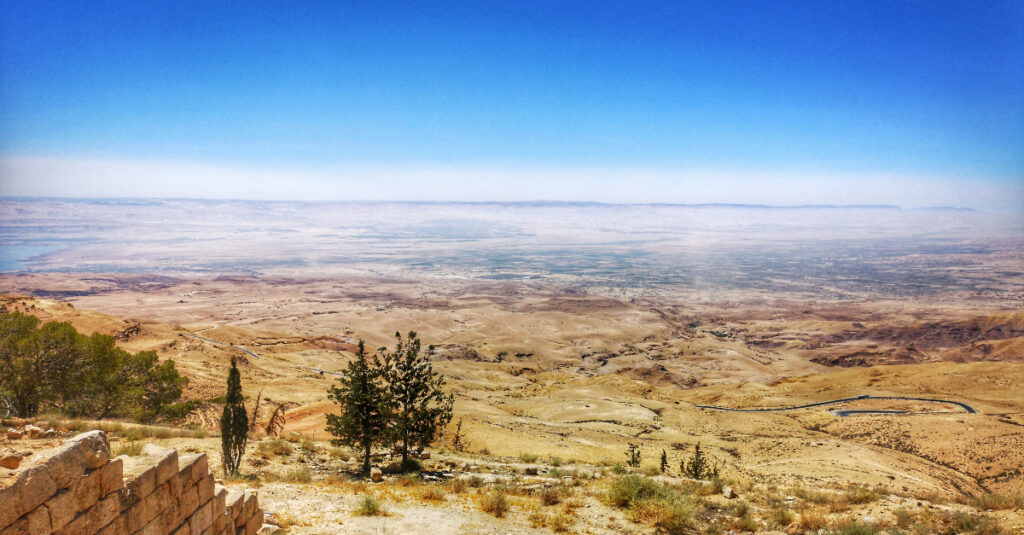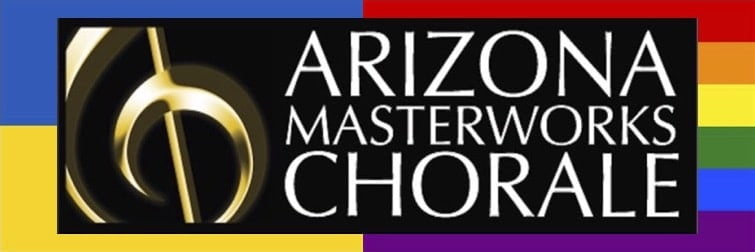Program Notes: Bright Canaan

Notes by Bob Altizer, President, Arizona Masterworks Chorale
At our March 2, 2025 concert “Coming Home,” AMC will perform “Bright Canaan,” a 1961 arrangement by Alice Parker and Robert Shaw of a traditional spiritual.
O who will come and go with me, I am bound for the land of Canaan
I’m bound fair Canaan’s land to see, I am bound for the land of Canaan.
O, Canaan, bright Canaan, I’m bound for the land of Canaan
O, Canaan, it is my happy home, I am bound for the land of Canaan
I’ll join with them who’ve gone before, bound for the land of Canaan
Where sorrows are no more, bound for the land of Canaan
Our songs shall fill the skies, I am bound for the land of Canaan
And higher still our joys they rise, I am bound for the land of Canaan
O, Canaan, bright Canaan, I’m bound for the land of Canaan
O, Canaan, it is my happy home, I am bound for the land of Canaan
But what is “Canaan” and how did it become a frequent subject of so-called “Negro spirituals”? And what are spirituals, anyway? And how do they relate to American history and to current trends in music – including hip-hop and Kendrick Lamar’s appearance at the 2025 SuperBowl?
We need a little historical and geographical context. The “Land of Canaan” is described in the Torah, the five books of Moses, and later the Old Testament of the Christian Bible, as comprising most of the eastern Mediterranean coastline, between Egypt in the south and Anatolia (Turkey) to the north, extending to the east bank of the Jordan River. These days, that’s the countries of Lebanon, Israel and the occupied Palestinian territories (West Bank and Gaza), and parts of Syria and Jordan.
It was home home to the descendants of Canaan, son of Ham and grandson of Noah, of Ark fame. Canaan was cursed by his grandfather in what remains as one of many mysteries of scriptural lore, but with two significant outcomes. First, as the heirs of an accursed ancestor, the “Canaanites” – in fact, several distinct ethnic groups including the Phoenicians who lived in the region for generations – were beyond redemption and therefore disposable, and thus, centuries after Noah, their lands were promised by the Hebrew God YHWH (Yahweh, Jah) to the Israelite Abram (Abraham), a descendant of Noah’s son Shem, and became the so-called “Promised Land, flowing with milk and honey.”
(N.B.: This may have been the first time the region was given away without consent of its inhabitants but certainly not the last; see for example genocide of the Canaanites after the fall of Jericho in 1400 BCE, the Balfour Declaration of 1917 and Nakba of 1948, and the current initiative to forcibly remove two million residents from Gaza to create a “Riviera of the Middle East.” In pretty much every case it didn’t go well for the inhabitants.)
The second outcome, the Curse of Ham, also had a profound impact in modern times. Purported to be the cause of Africans’ dark skin, it was justification for the chattel slavery (ownership of one human being by another) practiced by European and American colonial powers – and thus to the growth of the economy of the Western Hemisphere, from colonial times forward.
The transatlantic slave trade, that from the early 1500s to the 1860s brought millions of west Africans to the new world, is well documented. Suffering under their masters’ inhumane treatment, enslaved peoples relied on their long-established cultural practices to survive. One of the most important was that of oral history and storytelling that didn’t rely on reading and writing which were forbidden to them. Instead, speaking and singing maintained the community. When the masters tried to inculcate “heathens” with religion, the story of Moses and the Israelites’ escape from bondage in Egypt and crossing the River Jordan into the Promised Land crept into the enslaved population.
And so arose the vision of escaping bondage from slavery on the plantations of the American south to the “Promised Land” of the north – to Bright Canaan, “where sorrows are no more.”
The African oral traditions withstood the slave masters’ denial of even rudimentary instruments like banjos and drums. With only their voices to rely on, the tradition of spirituals and a host of new images grew: “Canaan” was the promised land in free states, north across the Ohio River (the Jordan), that you’d reach when you “wade in the water”; “follow the drinking gourd” meant to navigate by the Big Dipper constellation in the northern sky; and “steal away” and “swing low, sweet chariot” were anthems of the Underground Railroad that conveyed fugitives to freedom.
So the notion of Bright Canaan became the promised land, like the Israelites escaping Egypt: the dream of a new home out of cruel bondage, away from the American slave states. For enslaved people, the act of “coming home” meant traveling overland and across rivers under the constant threat of violence. Even reaching the northern states didn’t guarantee safety. The Fugitive Slave Act of 1850 codified denial of the escapees’ humanity – they were, after all, stolen property – and denied them asylum; even free states were compelled to return the chattel to its “rightful owner.”
Parallels to contemporary America – to immigrants braving hazards like the Darien Gap to escape violence in hope of reaching a new home where they can live in peace, and to acts of the Federal Government compelling complicity with inhumane treatment of migrants – cannot be overlooked.
––––
Every musical tradition evolves and gets co-opted by the society it exists in. The so-called “Negro spirituals” of the 18th and 19th Centuries have found a home in myriad church hymnals and arrangements of “traditional” words, melodies, harmonies, and rhythms. In many eyes and ears, they became a “shorthand for Blackness” that was anything but confrontational or challenging; they may have even been seen as triumph over racism.
But: Is this code switching a cultural heritage to make it more palatable for a mainstream audience? The American Choral Directors Association (ACDA) describes Alice Parker and Robert Shaw as producing “arrangements [that] have been great favorites over the years with choral conductors because they are well-crafted, earnest and passionate, and fun to sing and hear.” (Choral Journal LII, 11; 2012). Do we really need to know the entire context of the piece, from Biblical Canaan and its torments to the current day, against the backdrop of slavery and racism, to understand “Bright Canaan” as more than just “fun to sing and hear?”
There are threads in history, culture, society – and music – that stretch through time and across continents. We don’t need to know them all to appreciate something in the moment we experience it; being “fun to sing and hear” may suffice. But a deeper understanding of how we got here from there may give us a deeper appreciation and compassion for everything that’s gone before, awaken us to forces of good and ill at work in the world today, and help us bring about a future, hopefully, “Where sorrows are no more.”
Postscript: The Spirituals’ relatively simple text, a cappella (unaccompanied) singing, and message of escaping the torment of slavery found a successor in the hopeful, exuberant, rhythmic, band and orchestra-based Gospel music of the 20th and 21st Centuries. For many, Gospels are another “shorthand of Blackness.”
But what about hip-hop? In the NPR Code Switch podcast of February 5, 2025, host B. A. Parker notes:
The legend goes that on a sweaty August night in 1973, there was a block party in the South Bronx where DJs had to hack a streetlight to power their equipment. Someone picked up a mic and spontaneously started rhyming over the breakbeat, and that’s how hip-hop was born. In the five decades since that eureka — or, rather, that “yoooo” — moment, hip-hop music and culture has morphed into a multi-billion-dollar industry, with billionaire artists, and global fandom. And as hip-hop evolves, its many contradictions become more obvious. We’re digging into hip-hop as a rebellious art form turned pop culture pillar turned US cultural export.
I mean, hip-hop is many things. It’s the music, it’s product, it’s culture. It’s even a kind of shorthand for Blackness.
What does that have to do with the tradition of Spirituals as we’ll hear with “Bright Canaan?” B. A. Parker goes on to say (my emphasis):
So in a lot of ways, hip-hop exists despite America. It’s an art form built around what people have been deprived of. Like the originators of hip-hop, those kids and the Bronx who first freestyle didn’t have the money for instruments, but they had some records and a microphone.
After 50 years, and whether hip-hop has been co-opted, sold out, or is still an important statement of culture, consider its place on the thread from West African oral history. to Spirituals like Bright Canaan. to today: yet another art form built around what people have been deprived of.
Hope you enjoyed Kendrick’s SuperBowl Hip-Hop Halftime!

